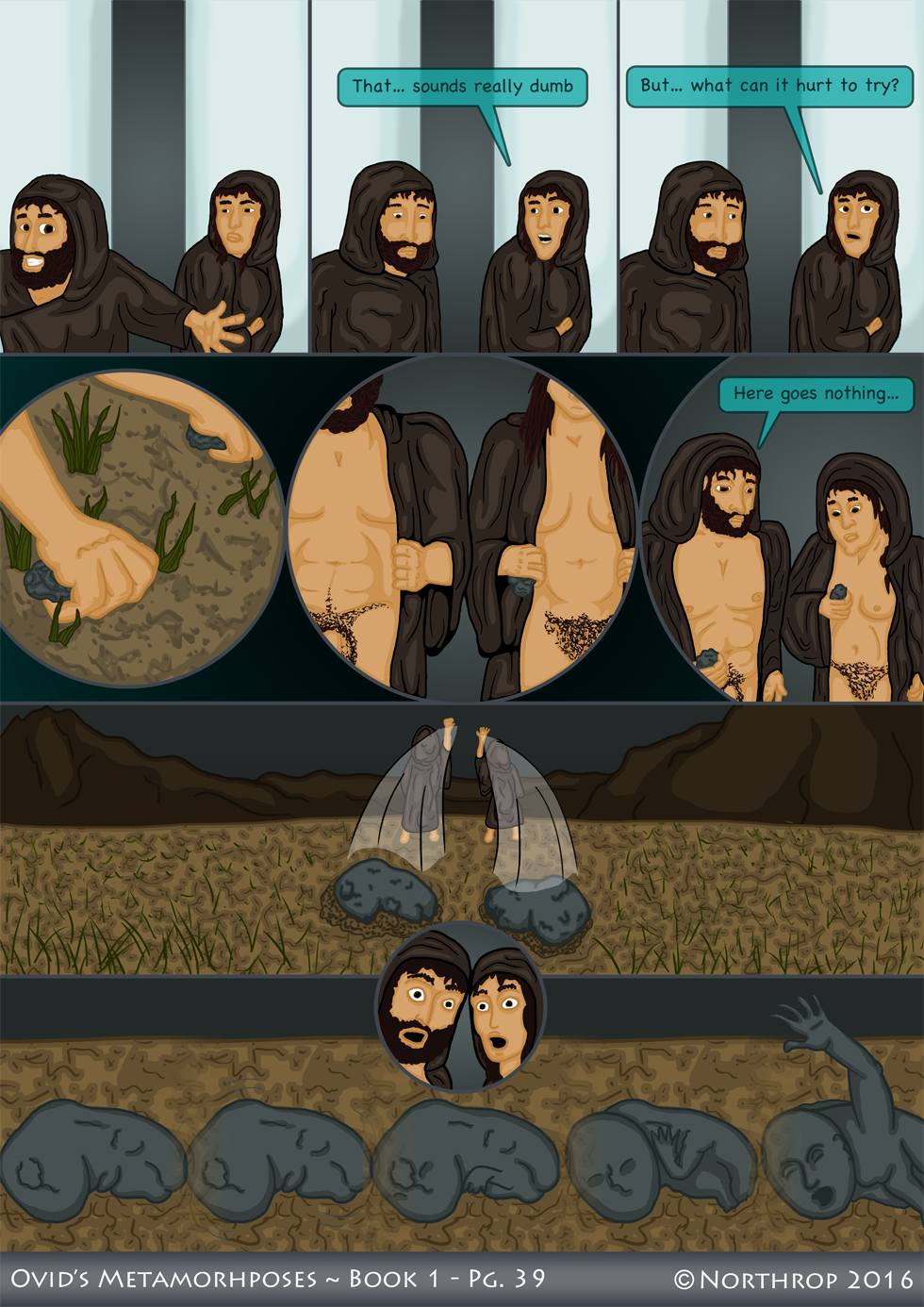Met. 1.395-402 – A Dumb Idea Gets Results
coniugis augurio quamquam Titania mota est,
spes tamen in dubio est; adeo caelestibus ambo
diffidunt monitis. sed quid temptare nocebit?
discedunt velantque caput tunicasque recingunt
et iussos lapides sua post vestigia mittunt.
saxa (quis hoc credat nisi sit pro teste vetustas?)
ponere duritiam coepere suumque rigorem
mollirique mora mollitaque ducere formam.
(Met. 1.395-402)
Although the Titan’s daughter* is moved by her husband’s interpretation,
doubt remains; both of them still don’t trust
the warnings of heaven; but what can it hurt to try?
They left the temple, covered their heads, loosened their robes
and threw the stones over their backs as they had been ordered.
The stones (and who would believe it if the story hadn’t come down to us from ancient times?)
Began to lose their hardness and rigidity
and softened, and in a little bit, they took shape.
Whoo! The gods’ prophecies finally pay off! Rememeber back on page 27, when Jupiter promised that a “better” humanity will rise out of the flood? This is it! We’re actually just one page away from wrapping up Deucalion and Pyrrha’s story. I know we’ve dwelt on them for a while, but this is an important moment for the poem: the final, world-wide “anthropogony” (birth of humans). How many has that been now? Let’s see, there was the one in the cosmogony… then each of the four ages… then the people born from the Giants’ blood… and now the stone people… That’s seven times people have been created and recreated so far in the poem; and we’re just now half-way through Book 1! (wow, I need to step on it with producing these pages…) It’s all in aid of Ovid’s metamorphic programme, however. The world was created at the beginning, but if you think it’s at all stable, you haven’t been paying attention. A poem of changes needs… well… changes! It’s not just the bodies of nymphs turning into trees: the whole of humanity, indeed the whole world is liable to change. Keep that in mind as we head into the “proper” stories of metamorphosis (which, I swear, are right around the corner!)
One big I didn’t manage to get into the comic was the bit in line 400, where Ovid says, “and who would believe it if the story hadn’t come down to us from ancient times?”. It’s a little flourish on his part to acknowledge the fact that this seems almost too wild to be true. Believe it or not, the Romans could be fairly rationalistic – many of these stories seemed as outlandish to them as they do to us!
* I.e., Pyrrha: she’s the daughter of Epimetheus, a Titan.

Discussion ¬